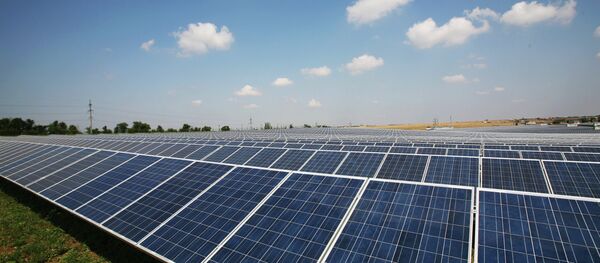"The design takes what a large tracking solar panel does and condenses it into something that is essentially flat," explains Aaron Lamoureux, a doctoral student in materials science and engineering at the University of Michigan, and lead author of a paper on the development, published in the latest issue of the journal Nature Communications.
Inside the new design, which looks like a conventional solar panel, an array of small solar cells are backed with a plastic sheet that splits into wavy, connected ribbons when stretched, thus tilting the cells towards the sun's ray's.
Conventional motorized tracking systems which follow the sun across the sky enable solar cells to capture between 20 and 40 percent more energy than conventional rooftop solar panels.
However, such conventional trackers are up to ten times heavier than stationary panels, making them too heavy for rooftops and vehicle surfaces.
But inside, it would be doing something remarkable on a tiny scale: the solar cell would split into tiny segments that would follow the position of the sun in unison."
The use of kirigami provides benefits over conventional tracking mechanisms by eliminating their need for bulky components and their structural supports, thus decreasing installation costs and allowing the technology to expand to new markets, including mobile installations, write the researchers in their paper, entitled "Dynamic kirigami structures for integrated solar tracking."
"Kirigami structures combined with thin-film active materials may be used as a simple, low-cost, lightweight and low-profile method to track the sun's position, thereby maximizing solar power generation."
In addition, similar kirigami-inspired designs may be extended for application in a wide range of optical and mechanical applications, including optical beam steering and phased array radar, which is currently used mostly in military applications.



